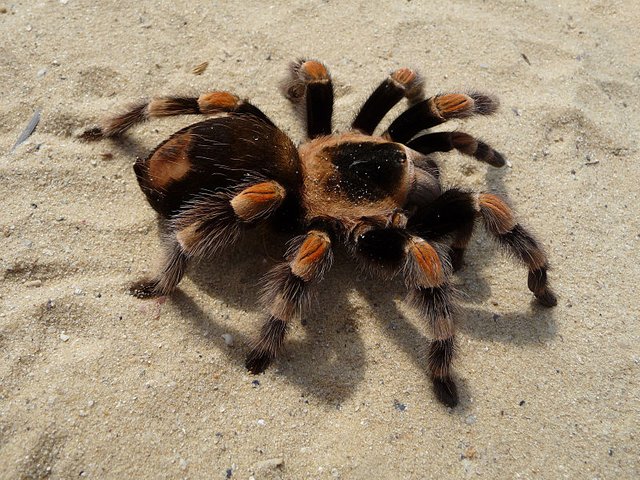Keeping Tarantulas as Pets
Tarantulas are an easy-to-keep pet for anybody with limited space and a fascination for arachnids.
Keeping a tarantula as a pet may not be for everybody, but those who can appreciate these eight legged creatures have a whole eight legged world ahead of them to unfold. Tarantulas have attracted pet owners from all over the world because of their ease of care, small space requirement and wide variety of species in the pet trade to choose from. Tarantulas originate from a few major places in the world. Tarantulas exist naturally in North, Central and South America, Africa, Asia and Australia. These tarantulas have adapted to many different environments and live very differently from one another. Aside from location, tarantulas may also be arboreal (tree living), terrestrial (ground living) or burrowers (under ground living). Within many of regions there are tarantulas ranging from desert dwelling to tropical.

Housing
Tarantulas have very basic but different housing needs depending on the individual species. Most species can be categorized into at least one of these three groups: arboreal, terrestrial and burrowing. An arboreal tarantula will spend most if not all of it’s natural life in the trees. These conditions may be simulated by having a tall enclosure with a lot of tall decorations that the tarantula can web up and make a home out of. Terrestrial tarantulas will spend most of their time on the surface of the substrate making a home out of any available decorations. These tarantulas should have an enclosure with a large surface area of substrate but be low enough that the tarantula can not climb and fall. Burrowing tarantulas can be kept in a similar style enclosure as the arboreal tarantulas except instead of having a lot of space for climbing the tall enclosure should be filled about three quarters of the way up with substrate packed firmly allowing the tarantula to dig without a cave in.
Feeding
Tarantulas can be fed once a week to once a month depending on their size and species. Many tarantula keepers raise their own cockroaches to feed their tarantulas since crickets from the pet stores are gut loaded with calcium based foods intended for reptiles. Since tarantulas are invertebrates and lack bones calcium is extremely harmful to them. When a tarantula consumes too much calcium they tend to have difficulties molting since their exoskeleton is hard, often resulting in getting stuck and dying. When gut loading for tarantulas you should feed a protein based diet to your roaches or crickets. A clean water dish filled with fresh water should be available at all times.
Molting
All tarantulas, regardless of origin, will molt. Molting is the process when a tarantula sheds her exoskeleton exposing her soft new “skin”. The smaller the tarantula the quicker the process will be, with larger tarantulas taking hours sometimes. Molting is a very delicate and dangerous process for tarantulas and they must be kept warm (a few degrees above room temperature is fine) and slightly higher humidity with a clean water dish available at all times.
Cleaning
Cleaning your tarantula enclosure should be kept to a minimum to avoid stress to your tarantula. Tarantulas are naturally clean and only require the occasional spot treatment after they go to the bathroom or eat. After your tarantula has finished her roach or cricket she will ball up anything she can not eat and leave it outside of her primary living area for you to remove. Destroying webs and changing your tarantula's decorations or substrate will only stress your tarantula. If your tarantula has begun webbing over the water dish or near the entrance to the enclosure continue removing the web from that spot in the enclosure and she will eventually find somewhere else to web.